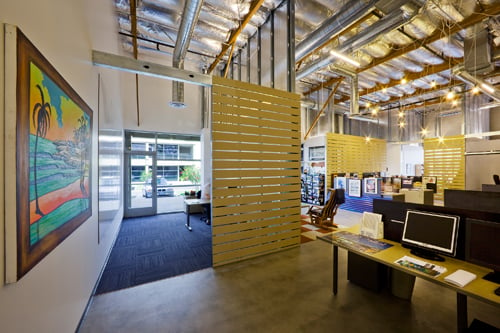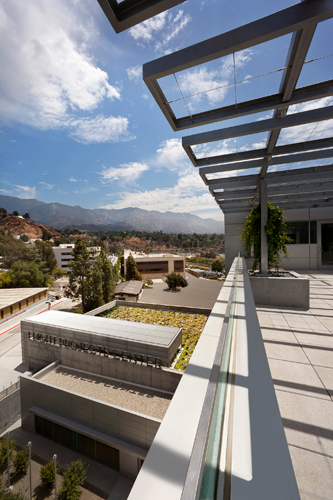3 Things You Must Know About the California Green Building Code
By Guest Blogger Steve Newsom, LEED AP
Currently, LEED and CHPS are two recognized, successful systems that give designers and owners the ability to achieve great things in the sustainable design, construction and operation of buildings. The beauty of these programs is the flexibility they provide in selecting the most appropriate, achievable goals for a particular project in a specific location. They also give the owner and architect the ability to focus on sustainable practices that they value.
 The 2008 California Green Building Code is an attempt to codify a variety of "green" practices, whether they are appropriate to a particular project or not. By putting these elements into code, designers and owners may actually be limited in their ability to creatively design a more sustainable project and reduce its impact on the environment.
The 2008 California Green Building Code is an attempt to codify a variety of "green" practices, whether they are appropriate to a particular project or not. By putting these elements into code, designers and owners may actually be limited in their ability to creatively design a more sustainable project and reduce its impact on the environment.
Listed below are three areas where the code should be reviewed and amended by the California Building Standards Commission prior to another public review period and adoption by any agency.
1. "Code" vs. Voluntary
According to Merriam-Webster, "code" means 1: a systematic statement of a body of law; especially: one given statutory force 2: a system of principles or rules.
Architects, engineers, builders and inspectors are familiar with "complying with code," so to have elements labeled as "voluntary" is confusing and unenforceable. The voluntary portions of this code should be eliminated and published as best practices, guidelines or some document other than the "code."
2. Unenforceable Sections
Several sections of the Green Code are difficult, if not impossible, to enforce. Here is a partial list:
504.5.4 Protect the building from thermal loss, drafts and degradation of the building envelope caused by wind and wind-driven materials such as dust, send, snow and leaves with building orientation and landscape forms. How would someone measure or enforce this?
513.1 Steel Framing. Design steel framing for maximum energy efficiency. Techniques for avoiding thermal bridging in the envelope include:
- Punching large holes in the stud web without affecting its structural integrity. How could someone economically punch holes in a stud and prove that it doesn't affect the structural integrity?
- Spacing the studs as far as possible while maintaining the structural integrity of the structure. If studs can be 24 inches apart, based on structural requirements, am I in violation of the code by putting them at 16 inches, in order to provide more durable backing for a wall finish?
- Exterior rigid insulation. Is the code now going to prescribe how I insulate?
- Detailed design of intersections of wall openings and building intersections of floors, walls and roofs. Is a plan checker going to question whether I've designed this appropriately? By what criteria?
706.1 Choice of materials. Compared to other products in a given product category choose materials proven to be characterized by one or more of the following.
- 706.1.1 Service life. Select materials for longevity and minimal deterioration under conditions of use.
- 706.1.2 Reduced maintenance. Select materials that require little, if any finishing. For those with surface protection, choose materials that do not require frequent applications of toxic or malodorous finishes.
- 706.1.3 Recyclability. Select materials that can be reused or recycled at the end of their service life in the project.
How would a plan checker enforce any of these provisions?
 In Section 705.1, projects are required to use California products or products from within 500 miles of the project. This has nothing to do with a building, but more to do with limiting pollution and energy use by shipping products from outside the state or 500 mile radius. How would this be enforced? If an architect specified a window from the East Coast, would he be required to use a different brand, based on proximity to the project? If he proceeded with the East Coast window, would his project be in violation of the code?
In Section 705.1, projects are required to use California products or products from within 500 miles of the project. This has nothing to do with a building, but more to do with limiting pollution and energy use by shipping products from outside the state or 500 mile radius. How would this be enforced? If an architect specified a window from the East Coast, would he be required to use a different brand, based on proximity to the project? If he proceeded with the East Coast window, would his project be in violation of the code?
3. Contradiction with the Commission's Nine-Point Criteria
Since 1980, the Building Standards Commission was tasked with ensuring that any new regulations follow a nine-point criteria:
1. The regulation does not conflict, overlap or duplicate other regulations. The Green Code does all of these by requiring compliance with other codes, then adding additional requirements.
2. The regulation is within parameters of enabling legislation.
3. The public interest requires the adoption of the regulation. This is questionable, due to the fact that California has a building code and energy code.
4. The regulation is not unreasonable, arbitrary, unfair or capricious. As noted above in the Non-Building Elements comments, many of the elements of this code are unreasonable, arbitrary unfair and capricious.
5. The cost to the public is reasonable, based on the overall benefit derived from the regulation. As noted above, the cost to provide unnecessary or inappropriate elements could never be considered reasonable.
6. The regulation is not necessarily ambiguous or vague. The Green Code contains many examples that are ambiguous and vague making plan check review difficult at best.
7. Applicable national standards, published standards and model codes have been incorporated.
8. The format of the regulation is consistent with the BSC's format.
9. The regulation, if it promotes fire and panic safety as determined by the State Fire Marshal, has their written approval.
Building sustainability is the A & E industry's greatest challenge going forward. It is important that codes and future legislation support the progress made to date and make positive changes for the future. I am not sure that the California Green Code does that in its current condition. After delving into the code and laying out my case, I am curious to know what you think. Please send any comments, thoughts or observations to snewsom [at] lpainc [dot] com. I look forward to your feedback and will address your comments in a future post.
Steve Newsom is a LEED Accredited Professional, an active member of the American Institute of Architects, and a K-12 Project Director at California-based LPA Inc.